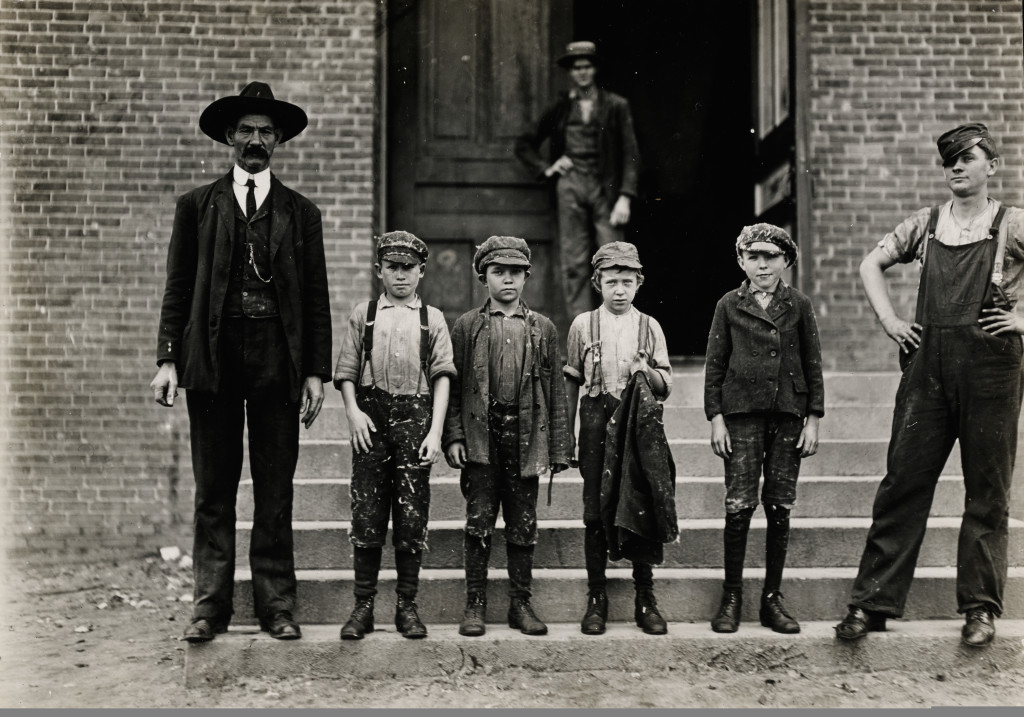Malik Miah
Posted August 4, 2023

Teen dies in sawmill accident as US states aim to roll back child labor laws (Headline of Wisconsin Public Radio, July 6, 2023)
THE POLICE RECEIVED an early-morning call regarding an unresponsive teenager at Florence Hardwoods, a sawmill in northern Wisconsin, reported the county sheriff’s office. Deputies and paramedics transported the 16-year-old to a local hospital before transferring him to Milwaukee children’s hospital.
Michael Schuls was attempting to unjam a wood-stacking machine when the conveyor belt he was standing on moved, causing him to be pinned in the machine according to the Sheriff’s office.
Schuls died two days later from his injuries. The Occupational Safety and Health Administration (OSHA) was notified about the accident and is investigating what took place.
Not Atypical
The teen’s death is becoming more common as states loosen child labor protections of 80 years to bring in super exploited labor especially where unions don’t exist.
These children are generally from poor working-class families where the wages supplements household income.
Fourteen states across the U.S. including Wisconsin have proposed new legislation to roll back decades-old child labor protections. Most states doing so are led by anti-labor Republicans — governors and state legislatures.
In 2015 Republicans adopted an antilabor “right to work” laws that made it more difficult to form unions and protect public workers. They pressed for changes to child labor restrictions.
In 2019, a Democratic governor, Tony Evers, was elected. Evers vetoed legislation in 2022 that would have changed current child labor laws that restrict the number of hours teenagers can work.
The push back against the right and employers on this issue has generally been weak, relying on liberal elected officials. There has not been a necessary broad-based public pushback.
Roots of Multi-industry Push
“The trend reflects a coordinated multi-industry push to expand employer access to low-wage labor and weaken state child labor laws in ways that contradict federal protections,” according to the Economic Policy Institute.
Skip Mark, a University of Rhode Island professor specializing in labor and human rights, outlined the history of the prevalence of child labor in the country’s agriculture industry in the July 6 Guardian.
In many ways, the employer push is a return to the late 1800s.
By 1870 the U.S. census expanded the collection of employment statistics to include children. It found that 75,000 children under age 15 worked — a number that didn’t include those “employed” in family businesses or on family farms.
The expansion of child labor quantitatively expanded in the 1870s with the industrial revolution. Children not only worked in agriculture but the new manufacturing factories in urban areas. The super exploitation of children between ages 5-14, and many mutilations and deaths led to a public outcry.
From the late 1800s until the 1930s workers began organizing unions on the railways and other industries. The new industrial labor organizations that were organizing and striking many employers frightened the capitalist class. It led the government of Democrat President Franklin Roosevelt to adopt favorable labor laws, including some child protections.
Mark pointed out that “The US Fair Labor Standards Act of 1938 helped limit child labor in many ways. However, it did and still does not apply to the agricultural sector, where most child labor in the US and most child injuries and deaths occur.”
“Child labor is most common in agriculture where children are maimed, killed, exposed to dangerous chemicals, underpaid, and we’ve known about these issues for decades.”
He added: “Child labor is hard to measure, and most estimates are terrible and should not be taken at face value. Governments don’t want to report how bad child labor is because it makes them look bad.
“Businesses don’t want to report that they have hired children because then they would have to pay fines. Children and their parents don’t want to report child labor because they need the job to support themselves and would lose their job if it was reported.”
Terri Gerstein, the director of the Project on State and Local Enforcement at the Harvard Law School Center for Labor and a Just Economy, echoed similar sentiments.
“To stop violations of child labor laws, we need more funding for enforcement, higher penalties, and clear, attainable ways to hold lead corporations accountable for violations in their supply chains,” Gerstein told the Guardian.
The treatment of immigrant and undocumented children is even worse. Language barriers and racism facing even legal refugees and migrants gives the employers extra incentive to violate legal protections for children. The refugees if they successfully cross the borders face indefinite, if not permanent, family separations and harsh treatment as cheap labor.
Unions Need to Step Up
The official labor federations have always opposed unrestricted child labor. At its first convention in 1881, The American Federation of Labor ((AFL) adopted a resolution calling on states to ban children under 14 “from all gainful employment.”
But fighting efforts to weaken child labor protection has not been a priority for the modern labor movement.
Organized labor needs to change course from lip service to action. Most working people are unaware of the issue of child labor and its connection to other attacks on the working class.
The death of a teenager in Wisconsin will hopefully be the impetus to bring new awareness to this issue and rally the public to stop the abuse and exploitation of young children.
